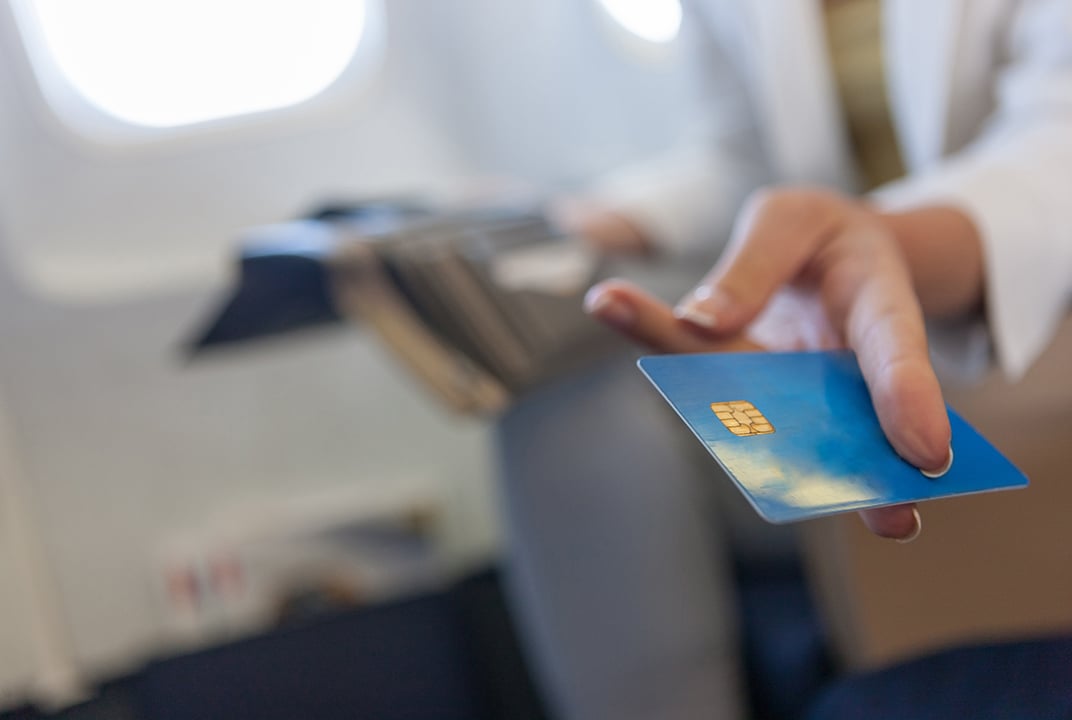Insight | #AviationFest2017 panel debrief: the case for commercialised inflight Wi-Fi
#AviationFest2017 panel debrief: the case for commercialised inflight Wi-Fi
null
Connectivity was high on the agenda at London’s Aviation Festival
Didn’t make it to Aviation Festival 2017? Here’s what happened at Inmarsat’s panel discussion on the commercialisation of inflight Wi-Fi, during one of the industry’s most influential aviation expos.
Five industry experts debated key talking points, from rising passenger demand to IFC-driven ancillary revenues. We’ve cherrypicked the highlights below.
At 12.10pm, the panel took their seats. Onboard and ready to talk inflight connectivity were:
David Coiley - Vice President Aviation, Inmarsat Aviation
Mario Franci - Vice President of Inflight Services, Inmarsat Aviation
David Fox - Vice President Inflight Services and Connectivity, Deutsche Telekom AG
Jan-Peter Gaense - Director of Project & Certification, Lufthansa Systems
Gavin Sugden - Business Group Director, GFK
And our host was Steve Nichols, Managing Editor of Get Connected.
These are the bold statistics powering the industry’s connectivity revolution
Based on Inmarsat’s global Passenger Survey in 2017, the largest of its kind, David Coiley kicked things off by delivering some initial numbers to set the scene.
“60% of passengers now view connectivity as a necessity, not a nice-to-have. 56% of passengers say a lack of reliable inflight Wi-Fi is a major cause of frustration on plane journeys. And while 45% of passengers would rather pay for inflight Wi-Fi than receive free IFE, 44% would stop flying with their preferred airline altogether if it can’t provide reliable Wi-Fi.”
GFK’s Gavin Sugden, who worked on the survey, added: “IFC is going to become a hygiene factor as opposed to a delighter. It’s something passengers really will expect to be there.
“It’s more dissatisfying if it’s not done right. If passengers had a bad experience with inflight Wi-Fi, we saw a big proportion of the sample not go back to that airline.”
The panel discussed passenger demand for IFC – and how some passengers don’t know what they’re missing
Steve Nichols asked the audience to vote what they think the top three criteria are that passengers use to choose an airline.
Gavin Sugden added: “One of the interesting things we found out is that there are big differences between different segments. For example, two-thirds of parents said IFC would be a life-saver when travelling with children. They can pass them a tablet and let them entertain themselves.
“Similarly with business passengers – without Wi-Fi on the plane they feel their time is wasted.”
"Without Wi-Fi on the plane, business passengers feel their time is wasted"
Jan-Peter Gaense, from Lufthansa Systems, highlighted that passengers don’t know what they’re missing until they have it:
Mario Franci, VP Inflight Services at Inmarsat Aviation, said: “This is focused on Europe and the fact is that in Europe we’re not used to having Wi-Fi on board. I think this will evolve over time along the lines of what you just said – it’s what you expect to have.”
Why do passengers choose to use IFC anyway?
David Fox, Deutsche Telekom AG, said: “Before you can make a good offer, you need to ensure that you have the right system for customers. This is what we’re doing with EAN, to eliminate these issues of speed and accessibility – and improving bandwidth at a reasonable price. That way you’re removing a gap from the customer’s ecosystem. They are connected everywhere on the ground – and now they are taking that connectivity on to the plane. It’s no longer a blackout place.”
"You’re removing a gap from the customer’s eco-system"
Next, the panel talked connected ancillary revenue. How do you really make money out of IFC?
Steve Nichols said: “Only one in 10 passengers make an inflight duty-free purchase. Do you look at that as a tremendous opportunity or are airlines flogging a dead horse? How can we be more innovative and really make money out of connectivity?”
Jan-Peter Gaense said: “Ancillary revenue without connectivity lacks the element of personalisation, using data analytics. A really personalised experience will help drive ancillary revenues. Which is better than pulling the duty-free cart through the cabin.”
Mario Franci said: “One of the reasons why people may start to purchase more on the aircraft is because they know they can. But you need to tell them. An airline needs to create expectations, that I can have great deals on goods I want. Then the next time the passenger travels they will check twice, as they saw a good deal last time.”
"An airline needs to create expectations, that I can have great deals on goods I want"
David Fox said: “I think there’s already a lot of personalisation effort going on pre- and post-flight but so far, once the doors are closed, there’s not a lot of information or knowledge about what the passenger is personally doing on board. That used to be pretty much a black box. Connectivity allows an airline to continue a passenger’s personalised experience along the whole travel chain.”
Efficient airline operations, powered by connectivity, were a big topic of conversation for the panel…
David Coiley explained: “Operational savings come from a whole range of areas. Things like dynamic re-routing, optimising flight tracks, avoiding adverse weather and simply connecting the aircraft in real-time.
“The area that is probably most interesting is in preventative and predictive maintenance initiatives. It’s monitoring systems, getting data in real-time on the ground, speeding up turnaround time – it’s about fleet optimisation. Minimising service disruptions and responding on arrival to issues that are experienced in flight. And it’s logistical as well – restocking things that need to be restocked by getting data in a more timely fashion.
It shows that IP connectivity comes to all parts of the aircraft, not just the passengers in the cabin.”
"Getting data in real-time on the ground, speeding up turnaround time – it’s about fleet optimisation"
Jan-Peter Gaense said: “Connectivity allows us to do what we’ve been doing on the ground. Inventory or stock management on the ground has been automatic for years now. Why should that not move on to the aircraft?”
Steve Nichols said: “And how do you decide how much data you want to transfer to the ground? As aircraft generate huge volumes of it every single flight.”
Jan-Peter Gaense said: “You want to have smart solutions that are triggered by events – and then transfer the data specific to that event to the ground.”


